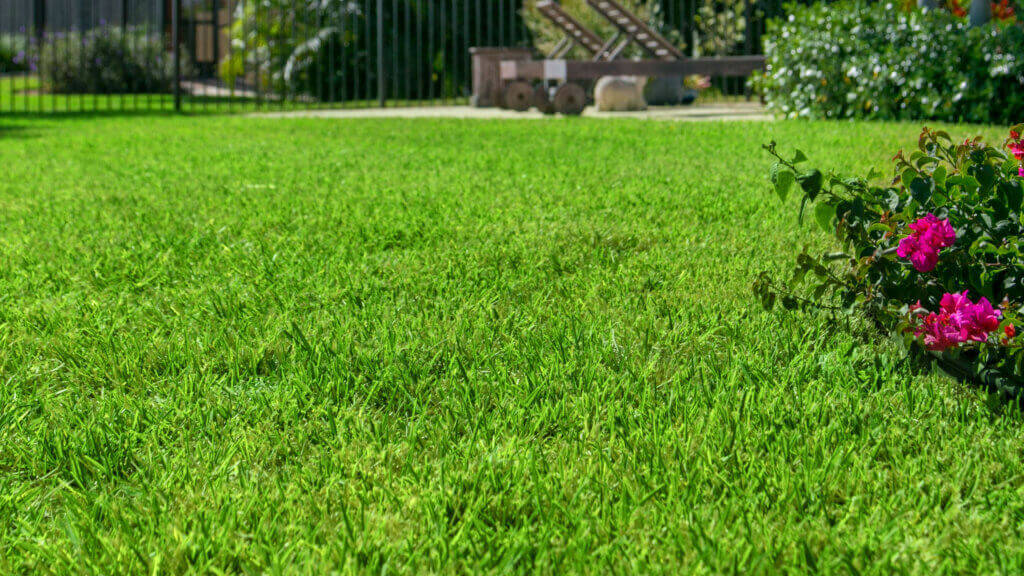
Tips and Everything You Need to Know About Floratam Grass
Floratam grass is a unique variation of St. Augustine and has rapidly become the most popular grass type for homeowners and commercial spaces throughout Florida. Developed in partnership between the University of Florida and Texas A&M University in 1972, Floratam is uniquely suited to the Florida climate and is relatively easy to maintain, among the many reasons for its popularity. Here’s what you need to know to decide if Floratam is right for you.
The Floratam Grass Look
Floratam is a coarse grass with broad, flat blades. It is best kept at a height of 3 to 4 inches, giving it a thick, lush appearance. During the summer months, Floratam will have a deep green to bluish-green hue, though it will fade a bit during cooler weather when it goes dormant. It spreads horizontally quite rapidly, making it easy to fill in any bare patches that have formed.
Hardiness and Durability
Floratam grass loves warm weather, growing quickly in the spring and summer. When temperatures begin to dip in the fall, growth slows. The grass goes fully dormant in the winter. Floratam cannot withstand temperatures below 20 degrees Fahrenheit, though that is generally not a concern in Florida’s warm, humid climate. It grows best in soil that is slightly acidic, about 6.0 to 7.5 on the pH scale, and rich in nitrogen.
One of the best things about growing Floratam in Florida is that the grass is remarkably salt-tolerant, making it a great choice for coastal properties. It doesn’t do well in the shade. So you’ll need to ensure your property gets at least 6 to 8 hours of sunshine to keep Floratam looking its best.
Although Floratam grows quickly, it is not as resistant to foot traffic as some other grass varieties, so it may not be the best choice for heavily used areas, like sports fields or children’s playgrounds. However, it is still suitable for most home and commercial environments, spreading horizontally to fill in any damaged areas fairly quickly.
Floratam was originally bred to be resistant to chinch bugs, a common lawn pest here in Florida. However, the bugs have evolved over the decades to the point where the grass is no longer as resistant as it once was. It still provides better protection than many other varieties. It is also resistant to the St. Augustine Decline (SAD) virus, brown patch fungus, downy mildew, and gray leaf spot.
Lawn Care and Yard Maintenance
Floratam does not produce seeds, so you’ll need to start your lawn with sod, plugs, or sprigs. Once established, though, the grass can propagate itself, as its root structure grows horizontally. The blades grow vertically and quite rapidly, so you’ll need to mow about once a week. Aim to keep your grass about 3 to 4 inches in height. Always use sharp mower blades to avoid tearing the grass. Dull blades can rip the grass instead of cutting it, making it more prone to pests and diseases.
Floratam is known for accumulating thatch, so you’ll need to clear it out periodically. While some thatch is healthy for your lawn, too much can choke it off, preventing it from getting the sunlight, carbon dioxide, and water it needs. When you notice thatch getting heavy, rake it loose before mowing.
Your lawn will only need about an inch of water each week, as Floratam is highly drought-tolerant. Aim to water deeply at each session to encourage strong root growth. If your soil is low in nitrogen, you can fertilize every month or two with a nitrogen-rich formula during the growing season.
Start Your Floratam with Fresh Sod for Sale in Florida
Sod is the best way to establish a Floratam lawn, as it will give your yard a lush, beautiful appearance right away. Here at Duda Sod, we are experts in common Florida grasses, including Floratam and other varieties of St. Augustine. We’ll work with you to help you determine the best type of grass to suit your unique property and preferences. Reach out to our team today to learn more about Floratam and the many other types of sod we have for sale here in Florida. Call now to get started.